According to eekwi.org, Lake Huron, which claims as many as 30,000 islands, has the most miles of Great Lakes shoreline. Most of the islands, however, including Manitoulin, which at 2,766 square kilometers is not only the largest island in Lake Huron but is the largest island in freshwater on Earth,
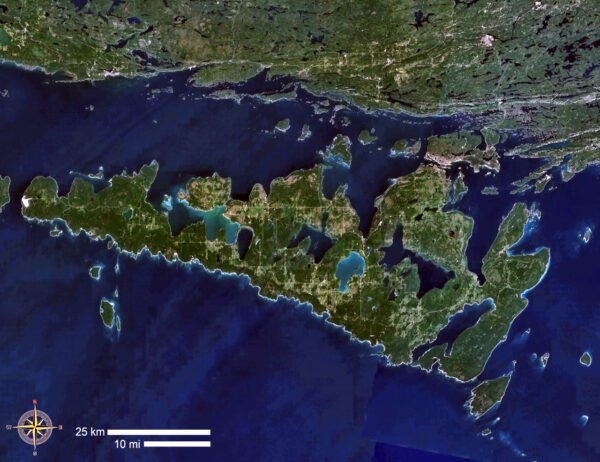
(From Wikimedia Commons By NASA WorldWind – NASA WorldWind, Public Domain.)
are in Ontario, Canada not in Michigan – the only U.S. state abutting Lake Huron. This Wikipedia page lists between 140 and 150 Michigan islands including one named Bacon and one called Frying Pan. (Sadly, they’re not adjacent).
In the initial Michigan post, I wrote that the main geological process that created the Great Lakes is isostatic (or post-glacial) rebound in which the land rises in response to glacial retreat. This same process shaped the islands including Mackinac. Its formation began about 13,000 BP as the lakes began acquiring their present shape. In fact, the glaciers of the northern region of the Great Lakes were among the heaviest and last to retreat and the land continues rising at a rate of about 1/4 inch per year or about two feet every century.
Um bocadinho sobre a Ilha Mackinac.
The earliest archaeological evidence for a human presence on the Island dates to approximately 900 CE and likely belonged to the Ojibwe people of the Anishinaabe Nation. The name derives from the Ojibwe “Mishimikinaak” meaning (are you ready for it?) Big Turtle. Thus, it should come as no surprise to regular readers that this

is the lone remaining souvenir from my stay on the island. (I also bought some of the famous Mackinac Island fudge but none of that left Michigan.) The first Europeans reached the island in the mid seventeenth century.
Although management of the Island transferred from the federal government to Michigan in 1895, it had, for the two decades prior, held the position as the United States’ second national park after receiving that designation in 1875 a mere three years after Yellowstone was established as the world’s first national park. Today, 80% of the island is a state park and it was listed as a national landmark in 1960.
Curiously, although the island banned automobiles in 1898 there is a numbered state highway encircling its 4.35 square miles.

(From Google Maps.)
The eight-mile road is the only highway in the United States that bans automobiles for its entire length. (It might require a bit of excessively imaginative pareidolia but some people say the island resembles the head of a snapping turtle.)
I knew early on that there was some connection between the island and the turtles. Exiting the ferry terminal onto Main Street I passed the Great Turtle Brewery and Distillery. Then, on my walk around the island, I happened upon this sculpture

which, of course immediately evoked the exemplar statement of infinite regress, “It’s turtles all the way down.”
(The apocryphal source story is that, after completing a lecture on astronomy, a woman in the audience confronted the British philosopher Bertrand Russell by asserting that the Earth wasn’t hanging in space but was supported on the back of an enormous turtle. Russell is reputed to have asked, “What is the turtle standing on?” and the woman replied, “Why, it’s turtles all the way down.”
Superficially, the woman’s statement seems absurd. But is it? What supports the subatomic particles the physicist might rely upon as the source of reality? Whence the foundation for a god claim made by any true believer? Are infinite turtles really a problem? They may be more tangible but from a philosophical standpoint are they qualitatively different from quarks? Or god(s)?)
The photo below more or less replicates how I first saw Grand Hotel. I write more or less because I snapped the picture Saturday when the skies were clearer and when I wasn’t rushing to try to get to my first (SiT) activity.

Ms. Addie’s confessions.
At each year’s SiT Weekend, members of the cast and crew join the fans in attendance. In 2022, Jane Seymour attended for at least her fourth time and I know that Christopher Reeve returned once before his injury and premature death. The film’s director Jeannot Szwarc and writer Richard Matheson (also now deceased) have also appeared at past weekends. For this particular weekend the participants weren’t quite as famous. This doesn’t mean, however, that they weren’t interesting as they shared their experiences both making the movie and their time on Mackinac Island.
Although I arrived too late for the day’s first two events, I was able to get through the long check-in line and make my way to the theater to hear Jo Addie’s talk called, “Confessions of a Somewhere in Time Extra.” Jo, seen here in costume for one of her several appearances in the film,

(From somewhereintime.tv).
is the president of the event’s sponsor – the International Society of Somewhere in Time Enthusiasts (INSITE) – a position she’s held for the past 23 years.
Among other stories, she regaled us with tales of how her planned two-night stay to watch the filming of a scene or two became an accidental three-week adventure as an extra in the film, of teaching the film’s star Christopher Reeve how to dance, of logistics of filming at Grand Hotel during its high season in June and early July, of developing a relationship that had her on a first name basis with Reeve, of her daring adventure escaping the island on Reeve’s private plane to spend a day on the mainland with Chris, Jane, and one or two others in the cast and crew,
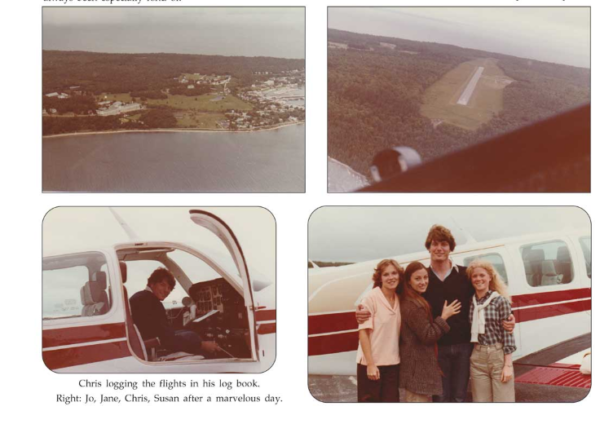
(From somewhereintime.tv).
and of the reality behind the screen passion between Reeve and Seymour.
Somewhere in Time meet Titanic.
After Jo’s presentation, I followed some in the crowd to the next activity called “Movies on Mackinac.” I found it a bit underwhelming but it was where I’d meet TH (from Colorado) and her mother who’d come up from Maryland’s eastern shore. We’d bump into each other over the coming days and spend a lovely Sunday morning together before they boarded the ferry for their return home.
By this point, I’d had my fill of these sorts of presentations and skipped the one about the Titanic (The film is set in 1912 – the year the Titanic sank and you can read an amazing Titanic tale here.) so I don’t know if this talk discussed some of the parallels between SiT and James Cameron’s film but there are so many that one can’t help but think SiT inspired much of Titanic. Here are just a few of the major similarities:
At the beginning of SiT, the elderly Elise (Susan French)

hands Richard a pocket watch (a talisman critical to the film). Near the beginning of Titanic, the elderly Rose (Gloria Stuart)
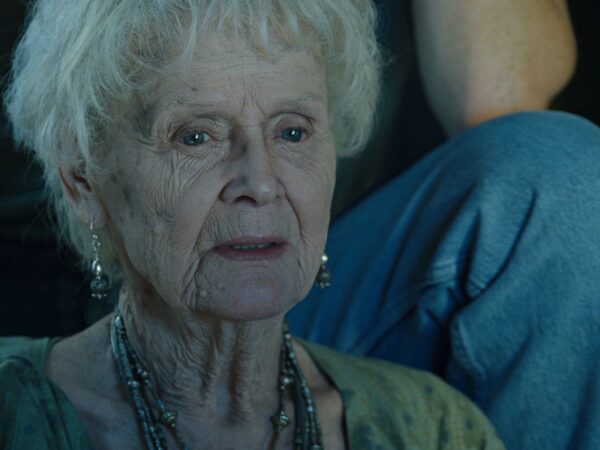
makes a revelation about that movie’s talisman, the Heart of the Ocean diamond.
A photograph of Elise

(looking lovingly at Richard as we will later learn) triggers Richard’s obsession with her and his belief that he can time travel to meet her. Jack’s recovered hand drawn portrait of Rose

prompts her to relate her story to the explorers who found it.
Both young women have to break ties with domineering men – Elise with W.F. Robinson

and Rose with Cal Hockley –
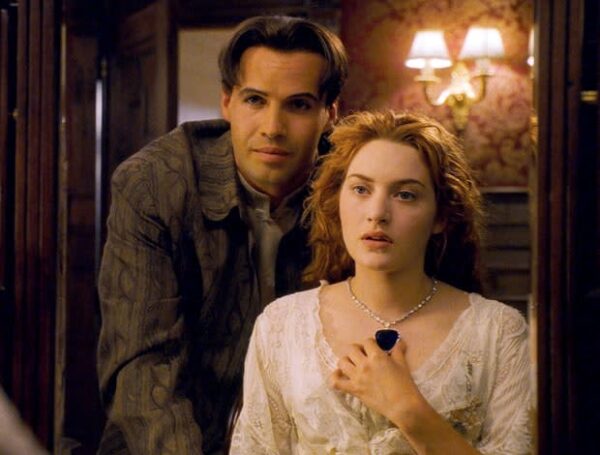
who want to control them albeit for different reasons.
Both Richard and Jack have a large, eccentric woman (Genevieve for Richard

and Molly Brown for Jack)
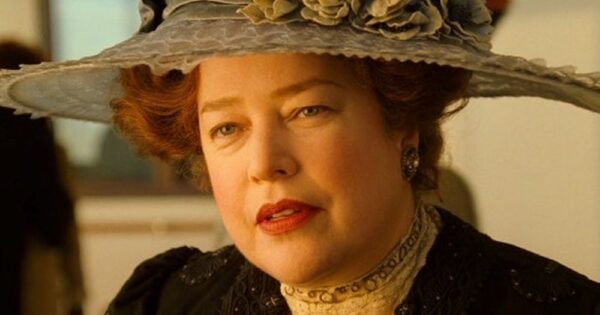
who assist them in their romantic quests.
Both couples fall in love remarkably quickly, share one dance, and one night of physical passion.


In both films the men die young while the women live to be quite old but both movies end with the lovers being reunited in some form of afterlife.


Depending on how finely toothed you want your comb to be, you can find many, many more connections in this Bob Simonson article.
Dinner.
As I wandered through the hotel during the day, I spoke with other SiT attendees particularly asking regulars to tell me something good about what brought them back annually. They did more than tell me that they liked it. All talked about camaraderie, reunions, and a shared love of the film. One couple extolled the food which was fine but, after the first dinner, I learned to be a bit wary of high culinary praise from people residing in small midwestern towns.
The five course menu (four of which are shown)
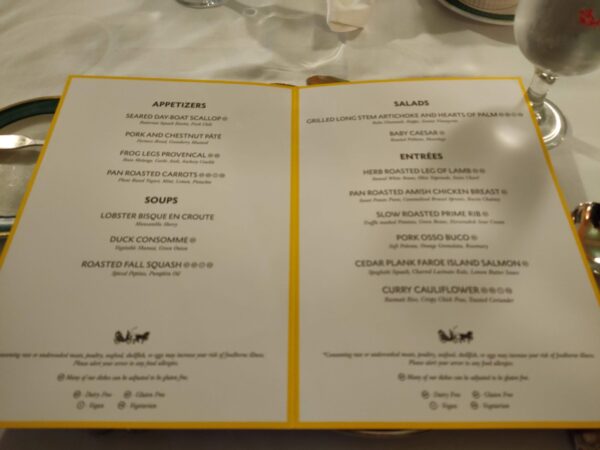
is elegant and impressive. Fortunately, the portions are reasonable (My appetizer was half a very large scallop, for example.) but its quality is, I think, somewhat constrained by the size of the Salle a Manger.

I wouldn’t want to be an expediter in this kitchen!
After dinner, we convened in the theater for an internet conversation with Jane Seymour that was plagued by technical difficulties followed by a screening of the film that likewise encountered some technical issues.
This ends day one at Grand Hotel. To see he other photos from the day of my arrival, use this link.